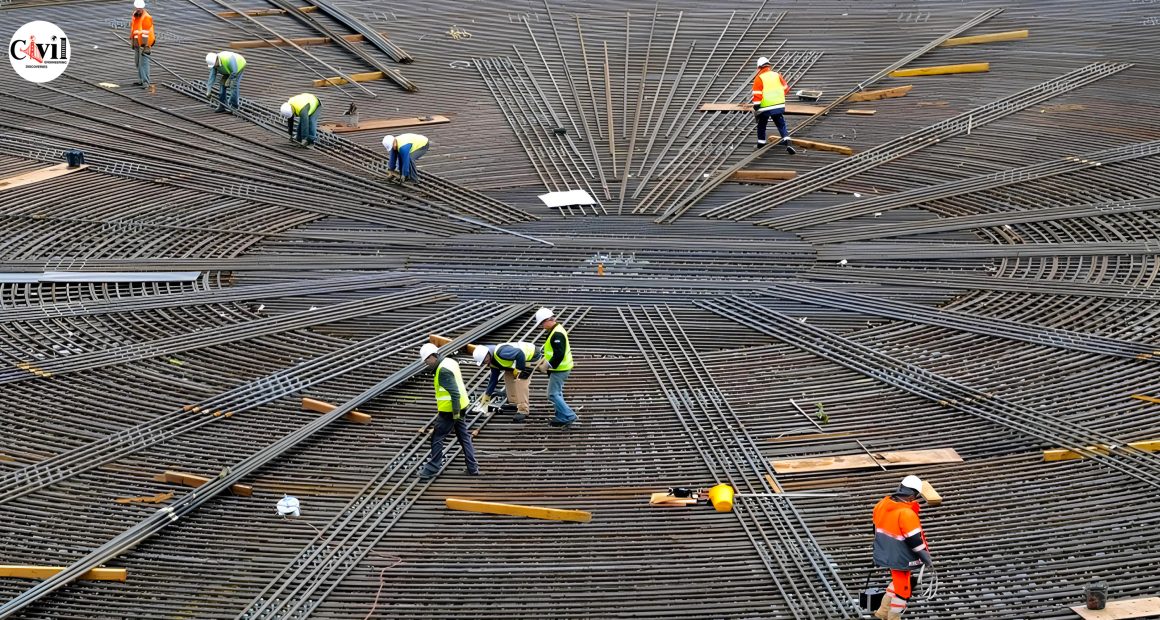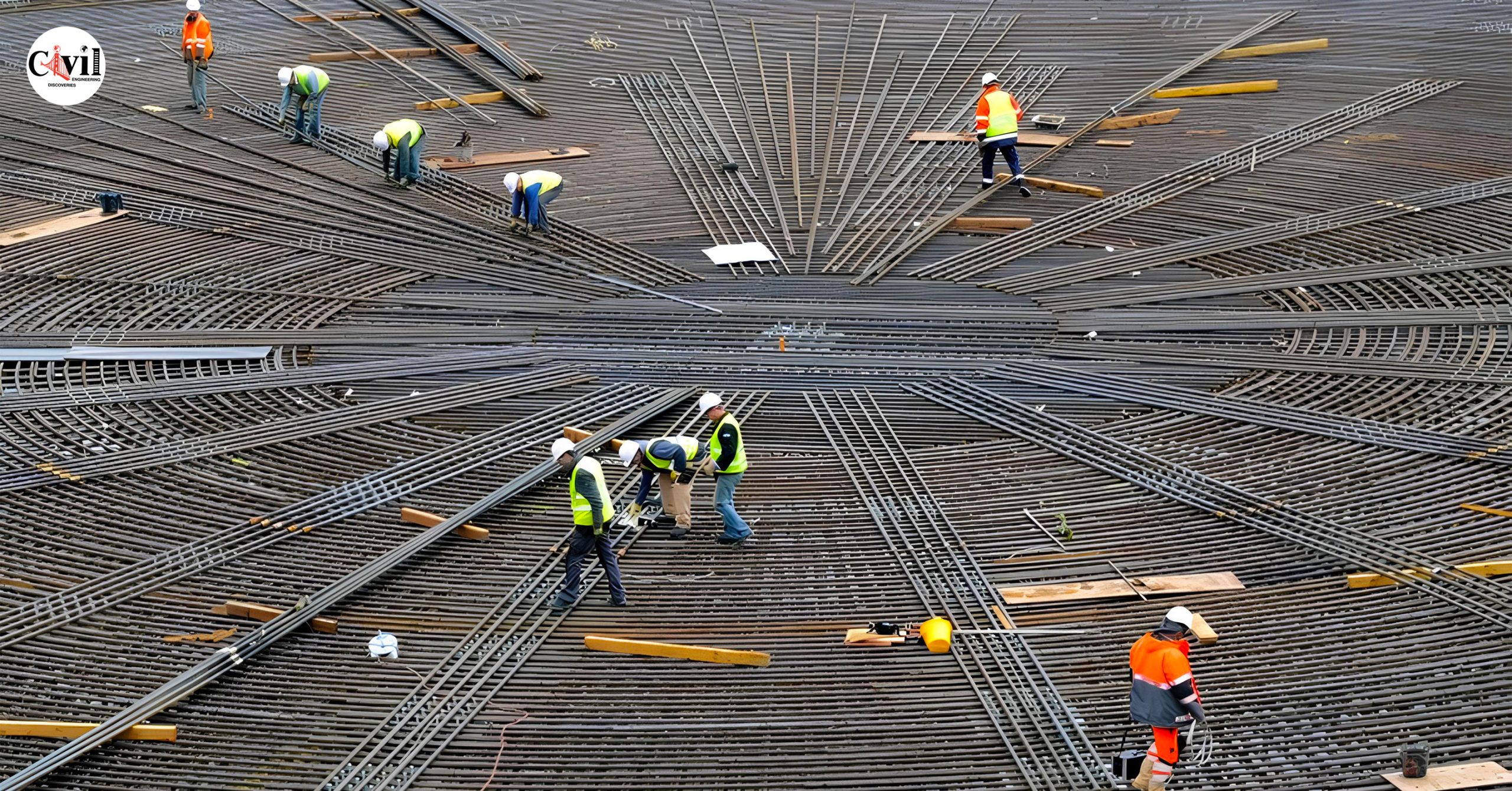Some important things to consider regarding spacing, effective depth, and other factors for concrete slabs:
Spacing of Reinforcing Bars:
- There’s a maximum limit on the space between individual bars. This limit depends on the diameter of the bar itself and the total thickness of the slab. Generally, the maximum bar diameter shouldn’t be more than 1/8th of the slab’s total thickness.
- There are different spacing restrictions for two types of bars in a slab:
- Main bars: These are the bars that carry the main tension forces in the slab. The maximum spacing for these bars is the smaller of 3 times the effective depth of the slab or 300 millimeters.
- Distribution bars: These bars are placed to minimize cracking due to shrinkage and temperature changes. Their maximum spacing is the smaller of 5 times the effective depth or 450 millimeters.
Effective Depth (d):
- The effective depth is basically the usable depth of the concrete slab for structural purposes. It’s calculated by subtracting the clear cover (distance between the concrete surface and the closest reinforcing bar) and half the diameter of the bar from the total thickness of the slab.
Minimum Distance Between Bars:
- There’s also a minimum distance required between individual bars and between bars and the edge of the slab. This is usually the greatest of:
- The diameter of the bar (if all bars are the same size)
- The diameter of the larger bar (if bars are different sizes)
- 5 millimeters more than the biggest size of coarse aggregate used in the concrete mix
For detailed information, refer to relevant standards like IS 456 (2000).
Click Here To See Reinforcements In A Reinforced Concrete Beam






